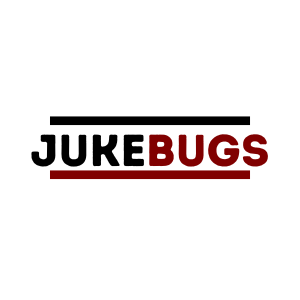Even though having hair lice does not pose a serious health threat, no one wants lice in their hair. These tiny parasitic insects feed on human blood and they can cause itching, tickling, and red sore which is irritable and discomfort. Fortunately, numerous safe and effective methods can permanently remove lice and prevent their return.
Signs and Symptoms of Hair Lice Infestation
Itching
This is one of the common signs that you may have lice on your hair. When lice feed on the scalp, they inject saliva into the skin to prevent blood clotting in that area. In turn, the saliva triggers allergic reactions leading to itching that may even intensify at night.
An individual experiences itching around the nape of the neck, hairline, and behind the ears. Scratching the itchy area provides temporary relief but can lead to further irritation, redness, and even secondary skin infections.
Tickling Sensation
As lice move around the hair and feed on blood from the scalp, some individuals may experience an itchy or crawling sensation that can be difficult to ignore. Ticking may not be constant during the day but may occur more prominently during the night when they are mostly active. Ticking can be more noticeable when the the hair is wet or when the scalp is warm, these conditions can also stimulate lice movement.
Presence of Nits and Lice on Hair and Personal Items
Nits are lice eggs and are another sign of an infestation. These tiny yellow, oval-shaped eggs are attached to individual hair strands close to the scalp and can be mistaken as dandruff or hair product residue, However, unlike dandruff, nits require careful removal and are not easily brushed out.
In addition to this, lice may be seen on personal items such as combs, brushes, and hats. If individuals share these items, they can even spread from person to person.
Red Bumps or Sores
As hinted earlier, scratching due to itching can lead to red bumps or sores on the scalp which is also known as papules. If left untreated, the severity of the bumps can vary from person to person ranging from mild redness to more pronounced swelling, raised lesions, and even potential complications.
Irritability and Difficulty Sleeping
Children in particular may suffer irritability and difficulty sleeping due to constant itching. This may disrupt sleeping patterns and even affect overall well-being. Even though this sign is not directly caused by the lice themselves, they arise as a result of the discomfort.
5 Proven Ways to Get Rid of Lice Permanently
1. Suffocate the lice using prescribed medications and products
This is one of the effective methods to get rid of lice permanently. This treatment cuts off their oxygen supply by creating an airtight environment. Using prescribed medicated powders containing spinosad and products formulated with permethrin or pyrethrin is effective in the treatment of lice.
Some commonly used substances are mayonnaise, olive oil, or almond oil. These products are applied generously on the hair and covered with a shower cap or plastic wrap to create an airtight seal. Doing this will deprive the lice of oxygen and eventually kill them.
For better results, leave the suffocating treatment on the hair for an extended period and wash thoroughly afterward. This is to remove the products and any dead lice or eggs.
2. Manual removal using a lice comb
Another method to get rid of lice is to comb them out of your hair manually using the lice comb. After applying conditioner to wet hair, use a specialized nit comb with fine teeth to comb out nits and adult lice. This procedure should be repeated at least three times for effective results.
Manually picking out nits and adult lice can be an additional helpful step.
Read Also: 5 Celebrities With Noonan Syndrome
3. Natural remedies
Even though several medications and products can permanently get rid of lice infestation, some people prefer to use natural remedies due to concerns about chemicals used in commercial products.
Some natural essential oils such as tea tree oil, neem oil, clove oil, lavender oil, and cinnamon leaf oil contain antiseptic and insecticidal properties. These oils do not only kill lice but also disrupt their life cycle, preventing them from multiplying.
If you prefer to use this natural oil, then mix a few drops with a carrier oil and apply it on hair and scalp. Leave it on for a few hours or overnight then wash the hair thoroughly.
4. Environmental measures
Since lice can only survive for a short period away from the scalp, taking environmental measures can permanently keep them away. Ensure to wash clothing, bedding, and towels in hot water (at least 54°C) and dry on high heat. You can also soak combs and brushes in hot water or disinfect them using alcohol and avoid head-to-head contact with others.
5. Preventing reinfestation of lice
Keeping lice at bay requires taking preventive measures to avoid its infestation. As such, it is important to regularly check for nits and live lice to catch any potential lice infestation early on,
Also, encourage personal hygiene, including frequent hair washing. and avoid sharing personal items like combs, brushes, hats, and other hair accessories
Avoid These When Trying to Remove Lice Permanently From Your Hair
- Avoid using harsh chemicals such as pesticides or insecticides on the hair as this can be harmful to both hair and overall scalp.
- Do not overuse lice treatment since this can lead to resistance and make lice more difficult to eliminate.
- Failing to follow up hair treatment can build up lice on the hair
While all listed remedies in this article would help remove lice from hair permanently, it is important that these treatments are repeated and preventive measures are applied.







